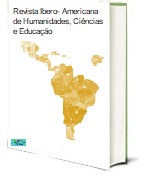CONSTRUCTIONALIZATION OF THE CONNECTOR AGORA QUE IN A FUNCTIONAL USE-CENTERED PERSPECTIVE
DOI:
https://doi.org/10.51891/rease.v8i6.5819Keywords:
Now that. Constructionalization. Linguistic change. Grammar of Construction. LFCU.Abstract
In this article we investigate the process of linguistic change of agora que in panchronical perspective and through the analysis of the data we register his linguistic change for connector discursive textual. Supporting our discussions are: Traugott (2008, 2010), Heine (2002), Goldberg (1995, 2006), Boas (2013), Bybee (1985, 2006, 2008, 2010), Langacker (1987), Croft (2001), Lakoff (1987), Hopper (2008), Votre (2012), Neves (2010, 2012, 2018), Martelotta (2003, 2008, 2011); Furtado da Cunha (2012), among others. The result of this process, analyzed by the optics of the grammatical constructionalization and of the theoretical presuppositions of the LFCU, in dialog with the Grammar of Constructions. Methodologically, we adopted netnographic research, a method of scientific procedure of online communities, in this work, the social network Twitter. We selected 100 tweeted samples of agora que and that constitute the corpus this work. They presented a functional slip in specific communication contexts in which they aggregate cognition, text and use. Thus, the pragmatic-discursive pressures and the increase in the type and token frequencies of this construct configured its evolutionary route of grammaticalization. Thus, the study of now that in the contexts of use evidenced neo analysis of morphosyntactic form and semantic-pragmatic meaning that led to the creation of micro construction [agora que textual connector], a pairing of new form and new meaning.
Downloads
Downloads
Published
How to Cite
Issue
Section
Categories
License
Atribuição CC BY

